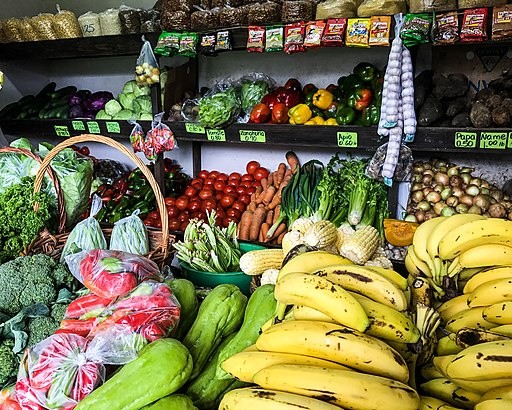According to an industry report from Global Fresh Fruits and Vegetables Market, fresh produce stands as a significant sector with substantial economic impact. In 2022, the industry is valued at $144 billion and is still growing annually at 5%.

However, more than 50% of agricultural fruit production is lost during different stages of post-harvest treatments. This is due to the reduced shelf life of raw agricultural commodities as well as the potential risks of foodborne illnesses.
Extending Shelf-Life With Wax Coatings
In recent years, various treatment and storage techniques have been employed to extend the shelf life of fruits and vegetables. One of these post-harvest processes is the application of paraffin wax as artificial coatings.
The primary goal of this technique is to decrease water loss through the skin of fruits and vegetables and enhance protection against pathogens. It is also used to improve the external texture and appearance of fresh produce and make them more appealing to customers.
Using paraffin wax has many other advantages. It enhances epicuticular surface waxes on fruits with smooth topography like pear, cucumber, and apple. Since paraffin has relatively low melting points, they can be applied in uniform coating without imparting damage to the fruit. Since this type of wax is inexpensive, it has been a straightforward industrial practice to use this material to provide a protective barrier around the fruits.
However, fruits and vegetables still get susceptible to pathogens despite the presence of protective wax coverings. This is because most of the artificial wax coatings achieved by dip coating lack the required roughness at the micrometer or nanometer scale. In addition, these coatings exhibit water contact angles that invite a high concentration of bacterial attachment. Aside from this, the injuries on the wax surface can serve as an entry point for pathogens, increasing crop vulnerability to contamination.
Better Protection for Fruits and Vegetables
To overcome these challenges, chemical engineering professor Dr. Mustafa Akbulut and horticultural science professor Luis Cisneros-Zevallos work together to engineer fresh produce that not only lasts longer, but can also be free of bacteria. Their study is detailed in the paper "Edible nano-encapsulated cinnamon essential oil hybrid wax coatings for enhancing apple safety against food borne pathogens."
Typically, a food-grade wax is applied to fruits and vegetables to prevent water loss. In this study, the researchers blend the wax with nano-encapsulated essential oils in protein carriers. The oils, obtained from cinnamon bark, help augment the antibacterial properties of the wax.
The newly improved wax coating process significantly improves food safety and provides defense against microbes. Akbulut and Cisneros-Zevallos claim that this composite covering contains antimicrobial properties which are both immediate and delayed.
Fresh produce that are ingested fresh or with minimum processing pose a safety risk due to the lack of high temperatures that can inactivate foodborne bacteria. In the new nano-encapsulated wax, bacteria will have a more difficult time adhering to the food surface, thus, limiting their survival. The delayed release of the essential oil extends the half-life of the product and active components as opposed to their uncapsulated counterparts.
RELATED ARTICLE : Edible Food Wrap Developed, Beneficial for Food Product Packaging
Check out more news and information on Food in Science Times.
© 2025 ScienceTimes.com All rights reserved. Do not reproduce without permission. The window to the world of Science Times.











